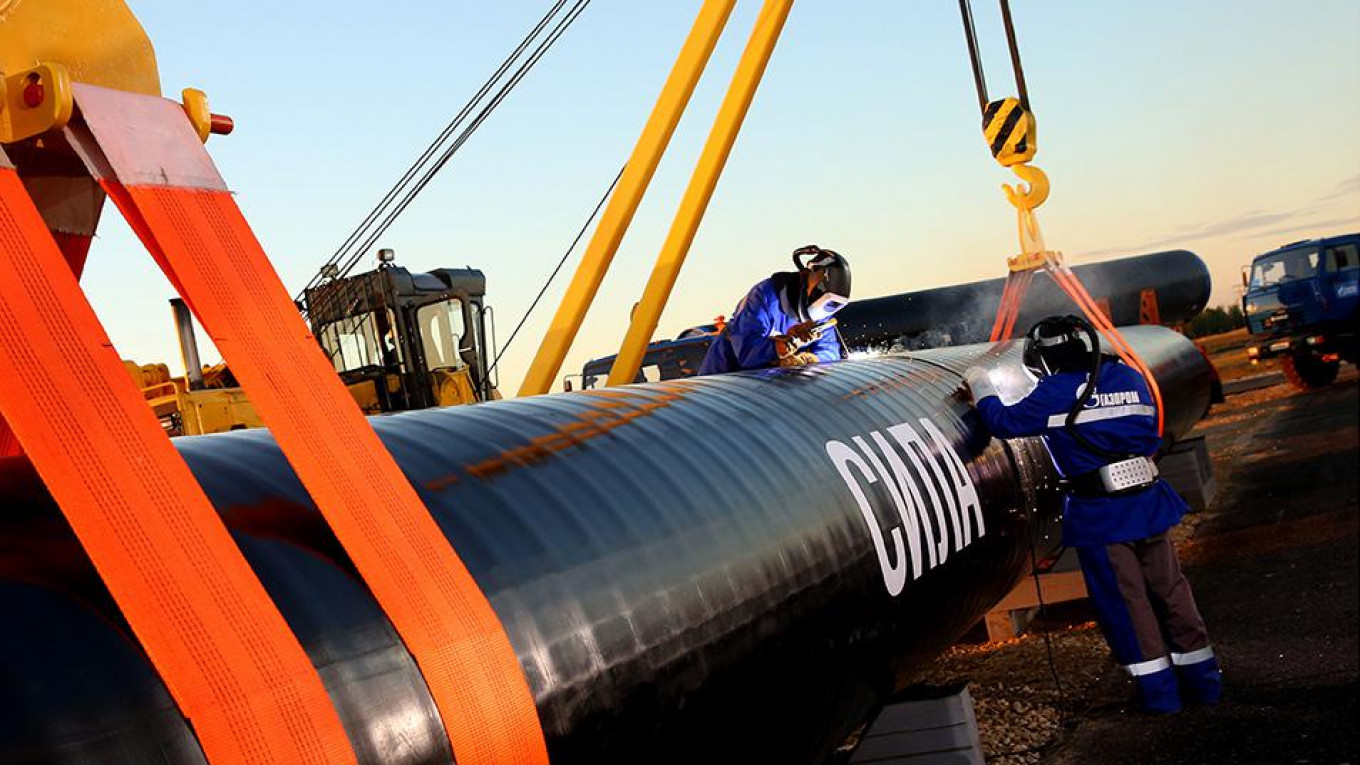Russian natural gas is one step closer to the Chinese energy market, as the China National Petroleum Corporation (CNPC) started to construct the middle part of the east line that forms part of the Power of Siberia gas pipeline.
The Russian part of the pipeline, which will deliver Russian gas to China, is nearly finished.
“Welding work has already begun,” Vesti Finance quoted Wang Yilin, chairman of the Board of Directors of CNPC, as saying last week. “The activities of the engineering project on the middle section of the eastern route is carried out in full force.”
The 1,100 km (683 mi.) route passes through three sections in China. Starting in Changling in the northeastern province of Jilin, the line ends at Yongqing in Hebei province, after going through China’s Inner Mongolia region, Liaoning province and the city of Tianjin. Nearly 10,000 people are involved in the construction of the middle section of the east line.
In 2014, Russia’s energy giant Gazprom and CNPC signed a 30-year agreement for Russian gas from the Irkutsk and Yakutia production centers to be supplied via the Power of Siberia and annually transport 38 bcm to China. The Power of Siberia is a 3,000 km (1,864 mi.) route that will also supply gas to Russia’s far east region.
“Construction of the Power of Siberia gas pipeline is going ahead of schedule, and Gazprom will start delivering gas to China well in advance, as early as December 1, 2019,” RT quoted Gazprom chief executive Alexei Miller as saying during talks with CNPC in Beijing in February.
The Power of Siberia pipeline is one of the most anticipated energy projects in Asia, which has huge implications for China's natural gas supply, LNG import demand and Moscow's strategic pivot to Asian markets.
The project is part of Beijing’s clean air policy that strives to reduce China’s reliance on pollution-making coal. The country’s natural gas consumption last year rose by 16.6 percent to 276.6 bcm. Because domestic production cannot keep up with growing demand, imported gas is helping make up for a considerable portion of China’s energy needs.
Neighboring Russia, with the world’s largest proved reserves, is ripe for supplying China as the latter switches from reliance on coal and oil to more eco-friendly resources, like natural gas. In addition, Gazprom is looking to increase its energy supplies to China, as Russia plans to expand its economic ties in the Asia-Pacific.
China is the largest natural gas importer in the world. After an unexpected growth in oil prices in 2017, China was forced to increase gas imports due to oil price fluctuations.







 President Ilham Aliyev shed light on the evolving contours of the peace process with Armenia during an international conference in Baku this week. ...
President Ilham Aliyev shed light on the evolving contours of the peace process with Armenia during an international conference in Baku this week. ...
 Azerbaijan and Armenia started the process of demarcation of their border on Tuesday, with the installation of the first border markers based on ge...
Azerbaijan and Armenia started the process of demarcation of their border on Tuesday, with the installation of the first border markers based on ge...
 President Aliyev emphasized the critical role of the North-South Transport Corridor in fostering transport cooperation between Azerbaijan and Russi...
President Aliyev emphasized the critical role of the North-South Transport Corridor in fostering transport cooperation between Azerbaijan and Russi...
 Iran and Pakistan have signed eight cooperation documents in various fields, and agreed to strengthen ties to fight terrorism in the region.
Iran and Pakistan have signed eight cooperation documents in various fields, and agreed to strengthen ties to fight terrorism in the region.
 As the conflict between Ukraine and Russia escalates, the strategic importance of Kharkiv, Ukraine's second-largest city, has come sharply into focus.
As the conflict between Ukraine and Russia escalates, the strategic importance of Kharkiv, Ukraine's second-largest city, has come sharply into focus.
 Iranian President Ebrahim Raisi expressed Tehran’s readiness to participate in significant development projects in Sri Lanka during the inauguratio...
Iranian President Ebrahim Raisi expressed Tehran’s readiness to participate in significant development projects in Sri Lanka during the inauguratio...



